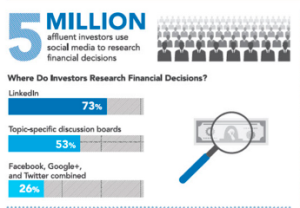 A modern web presence can deliver solid impact for associations and is critical for an increasingly web savvy membership. Associations need to engage their members and visitor audience with the right content and collaboration and be a resource so members feel value and come back for more interaction. Associations need to provide a valuable member engagement facility, facilitate events and registrations, publish content dynamically, manage member profiles, and actively author and publish content. With about half of user visits engaging over mobile devices, they also need to deliver a responsive and mobile-friendly experience.
A modern web presence can deliver solid impact for associations and is critical for an increasingly web savvy membership. Associations need to engage their members and visitor audience with the right content and collaboration and be a resource so members feel value and come back for more interaction. Associations need to provide a valuable member engagement facility, facilitate events and registrations, publish content dynamically, manage member profiles, and actively author and publish content. With about half of user visits engaging over mobile devices, they also need to deliver a responsive and mobile-friendly experience.
Yet, many associations do not consider a complete picture when pursuing a website design initiative. In addition to the website as the hub, associations must think about their broader web and digital presence, including social media and applications, email and marketing engagement, to create a more unified brand experience on the web.
When pursuing a digital / web presence project, consider eight critical dimensions of an effective digital presence:
The Digital Experience Framework
A Digital Experience Index (DXI) is based on eight interdependent dimensions.
- Brand: The overall positioning with respect to the target audience segments.
- Visibility: Optimization major search engines using keywords for greater visibility.
- Design: Delivering a professional, modern, engaging, and responsive look and feel.
- Content: Ensuring relevant, dynamic, and credible information is offered.
- Usability: Personalization, ease of use and accessibility for both users and admins.
- Functionality: The applications, tools and web services needed to deliver value.
- Conversion: The experiences that deliver calls to action and drive conversions.
- Amplification: How well content and messaging is amplified on social media.
Begin with a Self Assessment
The following is an example of some of the the scorecard assessment elements for the 8-dimension model. Analysis could also include a peer review to reveal additional gaps and opportunities against best-in-class peers. A simple 1-5 scoring can reveal the ‘as-is’ and suggest opportunities for improvement. By using prioritization, like ‘Must’, ‘Should’, ‘Could’ and ‘Won’t’ do (MoSCoW), you can use the DXI to start building a roadmap for a ‘to be’ vision.
1. Brand
The overall positioning with respect to the target audience segments.
- Does the website communicate the brand voice and message?
- Does the experience resonate with each target segment persona?
- Are visual communications consistent across the digital footprint?
2. Visibility
Optimization major search engines using keywords for greater visibility.
- Page titles and meta descriptions are the advertisement that users see that they search?
- Link analysis shows domain authority?
- Site structure and internal links can emphasize the top converting pages?
- Consistent NAP (Name / Address / Phone) structure?
- Alt descriptions provide an opportunity for additional keyword placement?
- Web platforms help enhance search engine visibility?
3. Design
Delivering a professional, modern, engaging, and responsive look and feel.
- Does the site deliver a clean and well laid out design?
- Do images reinforce a value proposition?
- Is the site responsive for mobile users?
4. Content
Ensuring relevant, dynamic, and credible information is offered.
- Blog features enable dynamic content to engage audience more frequently?
- Quality posts with video improve experience and visibility?
- Resources for members keep people coming back?
5. Usability
How easy the website is in navigation and user interactions and the effectiveness in the delivery of functionality?
- Mobile experience is not at the same standard?
- Navigation is clear and easy to understand, with few clicks?
- Accessibility is appropriate for the user base?
- The site is optimized for mobile devices?
- Font sizes reflect audience preferences?
6. Functionality
The right applications, tools and web services needed to deliver value.
- Functional priorities identify what audience and members most use and value?
- An appropriate content management system delivers manageability and reliability and easy administration of content?
- Integration with the right marketing automation platform?
- A strong hosting environment is tailored to the web platform?
- PageSpeed insights help optimize the site for speed?
7. Conversion
The experiences that deliver greater levels of call to action conversions.
- Appropriate pages are conversion focused with a single objective and clear call-to-action?
- Users can easily identify actions and suggestions?
- Site navigation and conversion goals are measured and tracked?
8. Amplification
How well content and messaging is amplified on social media.
- Investment in content is distributed to achieve a return?
- Google+ influences search ranking?
- LinkedIn, Twitter and Facebook are influential distribution channels?

